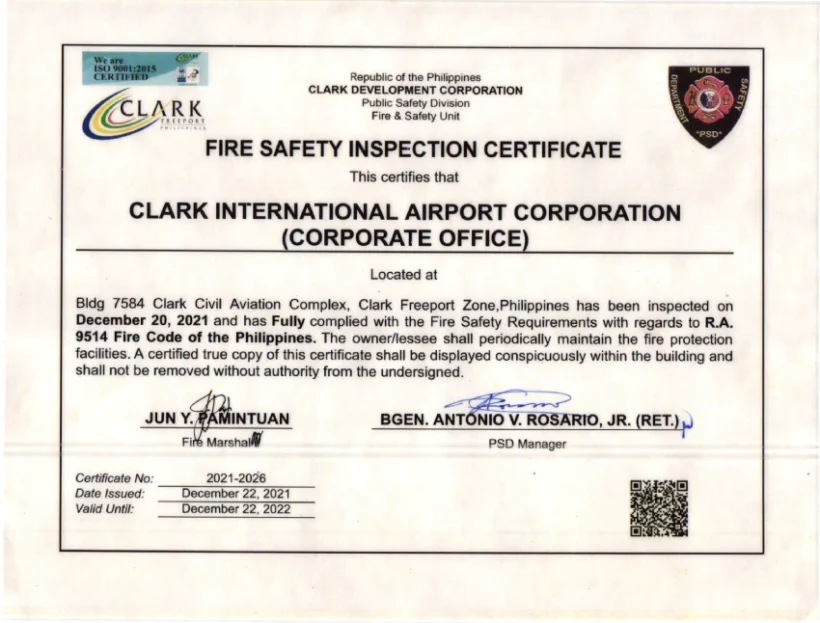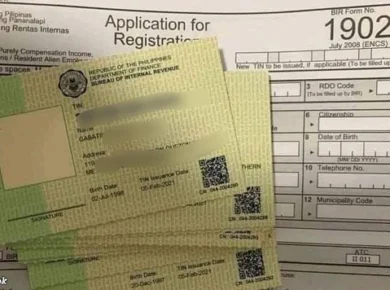Table of Contents
- 1. Understand the Importance of a Fire Safety Inspection Certificate
- 2. Prepare Your Documents
- 3. Visit Your Local Bureau of Fire Protection Office
- 4. Submit Your Application
- 5. Schedule an Inspection
- 6. Prepare for the Inspection
- 7. Undergo the Inspection
- 8. Address Any Issues
- 9. Receive Your Fire Safety Inspection Certificate
- 10. Renew Your Certificate Regularly
- Personal Opinion
If you’re planning to start a business or put up a new building in Cebu, one of the important steps you’ll need to complete is obtaining a Fire Safety Inspection Certificate. This certificate is crucial because it ensures that your building complies with safety standards designed to protect against fire hazards. Here’s a simple guide to help you navigate the process, written as if by a Cebuano who’s familiar with the local procedures.
1. Understand the Importance of a Fire Safety Inspection Certificate
A Fire Safety Inspection Certificate (FSIC) is a requirement from the Bureau of Fire Protection (BFP). It certifies that your property meets the fire safety standards set by law. Without this certificate, you can’t get a business permit or occupancy permit. It’s an essential document for ensuring that your building is safe for occupants and complies with local regulations.
2. Prepare Your Documents
Before scheduling your inspection, you’ll need to gather some documents. These include:
- Building Plans: Ensure your building plans are up-to-date and comply with the National Building Code.
- Fire Safety Design: This includes your fire alarm system, sprinklers, and fire exits.
- Previous Inspection Reports: If applicable, provide reports from any previous inspections or safety audits.
Make sure you have these documents ready and complete. It will make the whole process smoother and faster.
3. Visit Your Local Bureau of Fire Protection Office
Go to your local BFP office. In Cebu, you can find their main office in various locations. The BFP will guide you through the process and provide you with the necessary forms. The BFP’s website Bureau of Fire Protection – Cebu is a good starting point for finding contact information and office locations.
4. Submit Your Application
Fill out the application form for the Fire Safety Inspection Certificate. This form can usually be obtained at the BFP office or downloaded from their official website. Make sure to provide accurate and complete information to avoid delays.
5. Schedule an Inspection
Once your application is submitted, you’ll need to schedule a fire safety inspection. The BFP will assign an inspector who will visit your property to check if it meets all safety standards.
6. Prepare for the Inspection
Make sure that your property is ready for inspection. Here are a few things to check:
- Fire Exits: Ensure all exits are clearly marked and accessible.
- Fire Alarms and Sprinklers: Test these systems to make sure they are working correctly.
- Fire Extinguishers: Check that they are properly installed and maintained.
A clean and well-organized property not only speeds up the inspection but also shows your commitment to safety.
7. Undergo the Inspection
During the inspection, the fire safety inspector will assess your building’s compliance with fire safety regulations. They will check for:
- Fire Alarms: Proper installation and functionality.
- Fire Exits: Compliance with regulations and accessibility.
- Sprinkler Systems: Proper setup and maintenance.
- General Safety Measures: Such as clear escape routes and properly marked exits.
8. Address Any Issues
If the inspector finds any issues, you’ll need to address them before receiving your certificate. The BFP will provide you with a list of deficiencies and guide you on how to correct them.
9. Receive Your Fire Safety Inspection Certificate
Once all issues are resolved, and the BFP is satisfied with the compliance of your property, you’ll receive your Fire Safety Inspection Certificate. Keep this certificate in a safe place as you’ll need it for other official purposes, like securing a business permit.
10. Renew Your Certificate Regularly
Remember, the Fire Safety Inspection Certificate isn’t a one-time thing. You’ll need to renew it periodically, usually every year, to ensure that your property remains compliant with fire safety standards.
Personal Opinion
As a Cebuano, I understand how important it is to keep our properties safe. Having a Fire Safety Inspection Certificate isn’t just about following regulations; it’s about ensuring the safety of everyone who uses the building. It might seem like a hassle, but it’s a small price to pay for peace of mind and safety. Plus, it’s all part of being a responsible business owner or property manager.
By following these steps, you’ll ensure that your property is up to code and that you’re contributing to a safer Cebu. Don’t hesitate to reach out to the BFP if you have any questions or need assistance. They are there to help and make sure we all comply with safety standards.
For more information and to download forms, visit the Bureau of Fire Protection – Cebu. If you need any more help or advice on this process, feel free to ask. Stay safe and good luck with your property. Daghang salamat!


![Where to get NBI clearance in Cebu? [Updated 2024] nbi clearance](https://hellocebuph.com/wp-content/uploads/2024/02/nbi-clearance-390x290.webp)
![Simala Mass Schedule 2025 [Official Schedule] Monastery of the Holy Eucharist by Mary Loren Capas](https://hellocebuph.com/wp-content/uploads/2025/01/Monastery-of-the-Holy-Eucharist-by-Mary-Loren-Capas-390x290.webp)




![List of NBI Branches and Satellites in Cebu, Philippines [Updated Contact Information in 2024] nbi satellite office mandaue](https://hellocebuph.com/wp-content/uploads/2024/04/nbi-satellite-office-mandaue-390x290.webp)

![Travel Guide to Simala Church: Itinerary and Budget [2024] simala church image by Jane Jumaoas](https://hellocebuph.com/wp-content/uploads/2024/02/simala-church-image-by-Jane-Jumaoas-390x290.webp)